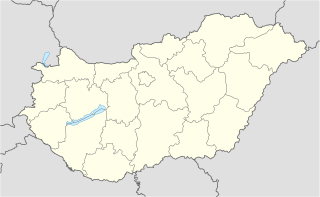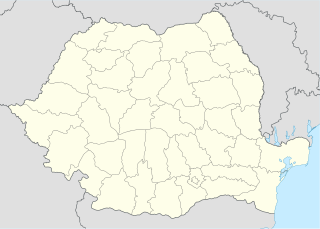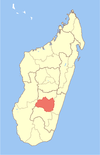
The Usarp Mountains is a major Antarctic mountain range, lying westward of the Rennick Glacier and trending N-S for about 190 kilometres (118 mi). The feature is bounded to the north by Pryor Glacier and the Wilson Hills. Its important constituent parts include Welcome Mountain, Mount Van der Hoeven, Mount Weihaupt, Mount Stuart, Mount Lorius, Smith Bench, Mount Roberts, Pomerantz Tableland, Daniels Range, Emlen Peaks, Helliwell Hills and Morozumi Range.

Janov is a village and municipality in Prešov District in the Prešov Region of eastern Slovakia.

Napkor is a village in Szabolcs-Szatmár-Bereg county, in the Northern Great Plain region of eastern Hungary.

Kállósemjén is a village in Szabolcs-Szatmár-Bereg county, in the Northern Great Plain region of eastern Hungary.

Magy is a village in Szabolcs-Szatmár-Bereg county, in the Northern Great Plain region of eastern Hungary.

Nyőgér is a village in Vas county, Hungary.

Chiscani is a commune located in Brăila County, Romania. It is composed of three villages: Chiscani, Lacu Sărat and Vărsătura.

Mavorano is a town and commune in Madagascar. It belongs to the district of Manakara, which is a part of Vatovavy-Fitovinany Region. The population of the commune was estimated to be approximately 13,000 in 2001 commune census.

Căiuți is a commune in Bacău County, Romania. It is composed of nine villages: Blidari, Boiștea, Căiuți, Florești, Heltiu, Mărcești, Popeni, Pralea and Vrânceni.

Dagâța is a commune in Iași County, Romania. It is composed of eight villages: Bălușești, Boatca, Buzdug, Dagâța, Mănăstirea, Piscu Rusului, Poienile, Tarnița and Zece Prăjini. The commune had 4809 people at the 2002 census; of these, 89.8% were ethnic Romanian and 10.2% were Roma. 98.9% of inhabitants were Romanian Orthodox.

Buceș is a commune in Hunedoara County, Romania. It is composed of seven villages: Buceș, Buceș-Vulcan, Dupăpiatră (Dupapiátra), Grohoțele, Mihăileni (Miheleny), Stănija (Sztanizsa) and Tarnița.

Warpuny is a village in the administrative district of Gmina Sorkwity, within Mrągowo County, Warmian-Masurian Voivodeship, in northern Poland. It lies approximately 11 kilometres (7 mi) north of Sorkwity, 11 km (7 mi) north-west of Mrągowo, and 48 km (30 mi) east of the regional capital Olsztyn.
Tijucas do Sul is a municipality in the state of Paraná in the Southern Region of Brazil. It is known for its horse ranches and attracts tourists all year round.
Nagygörbő is a village in Zala County, Hungary.
Dragievtsi is a village in Gabrovo Municipality, in Gabrovo Province, in northern central Bulgaria.
Blackwelder Glacier is a pocket glacier, 1 nautical mile (2 km) wide and 2 nautical miles (4 km) long, between Salmon Hill and Hobbs Glacier in Victoria Land. The glacier was studied during U.S. Navy Operation Deepfreeze, 1957–58, by Troy L. Pewe and was named by him for Eliot Blackwelder, former head of the Geology Department at Stanford University.
Mount Peter is a large dome-shaped rock outcrop with a flat, sheer north face, about 2 nautical miles (3.7 km) east of Mount Bechervaise in the Athos Range, Prince Charles Mountains in Antarctica. First visited in November 1955 by an ANARE party led by J.M. Bechervaise. Named by Antarctic Names Committee of Australia (ANCA) for Peter Crohn, geologist at Mawson Station, 1955-56.
Kovačevac is a village in the municipality of Jagodina, Serbia. According to the 2002 census, the village has a population of 235 people.














